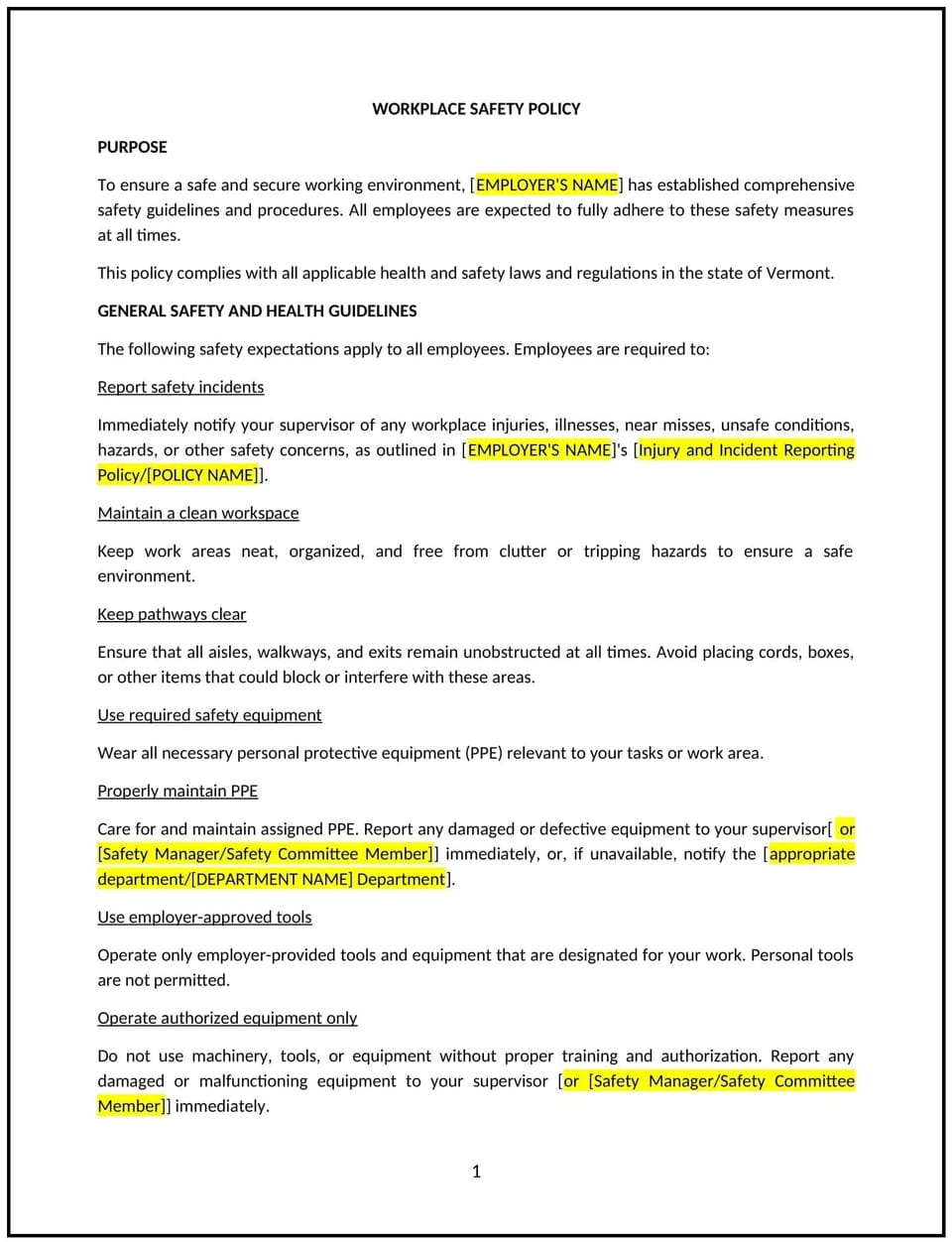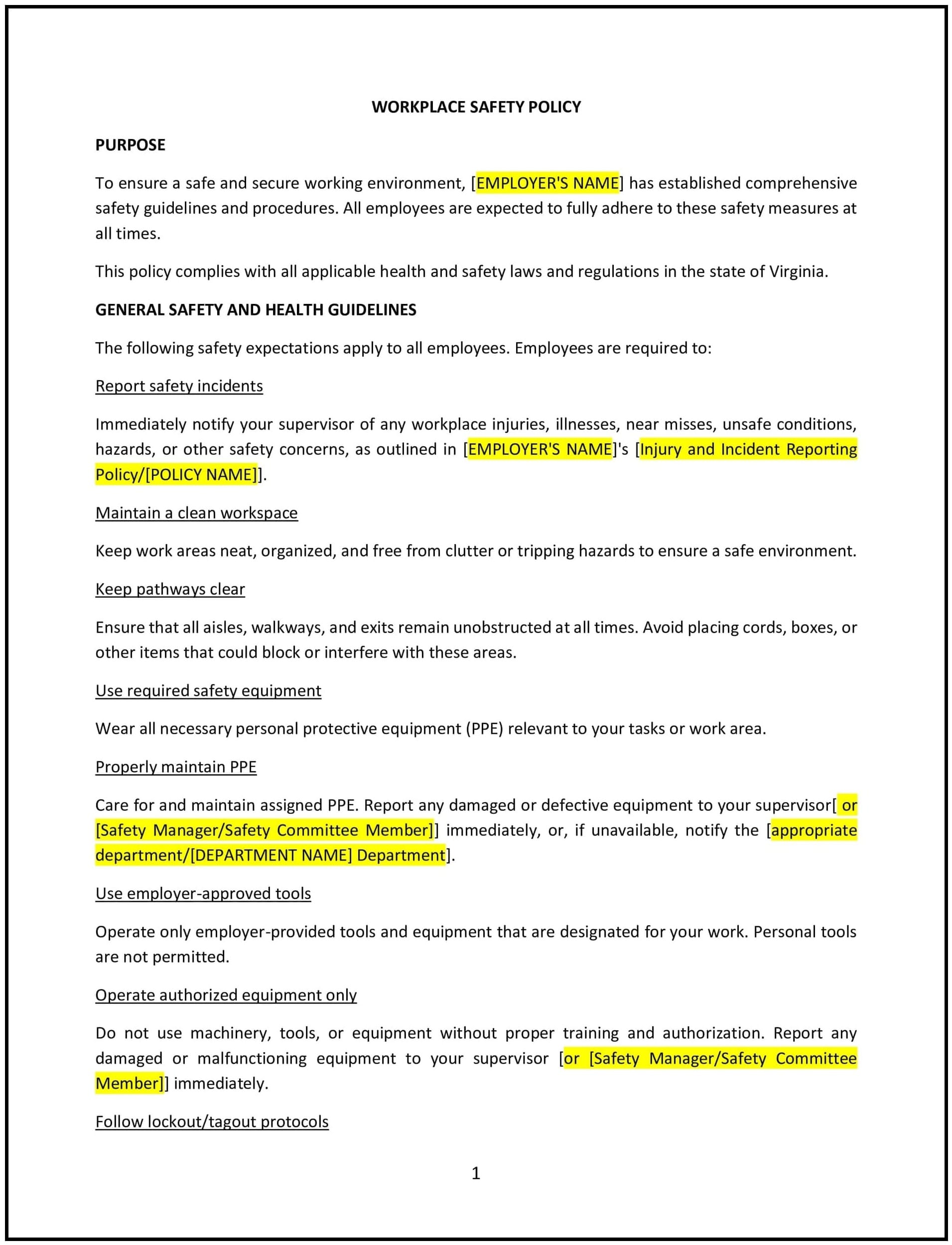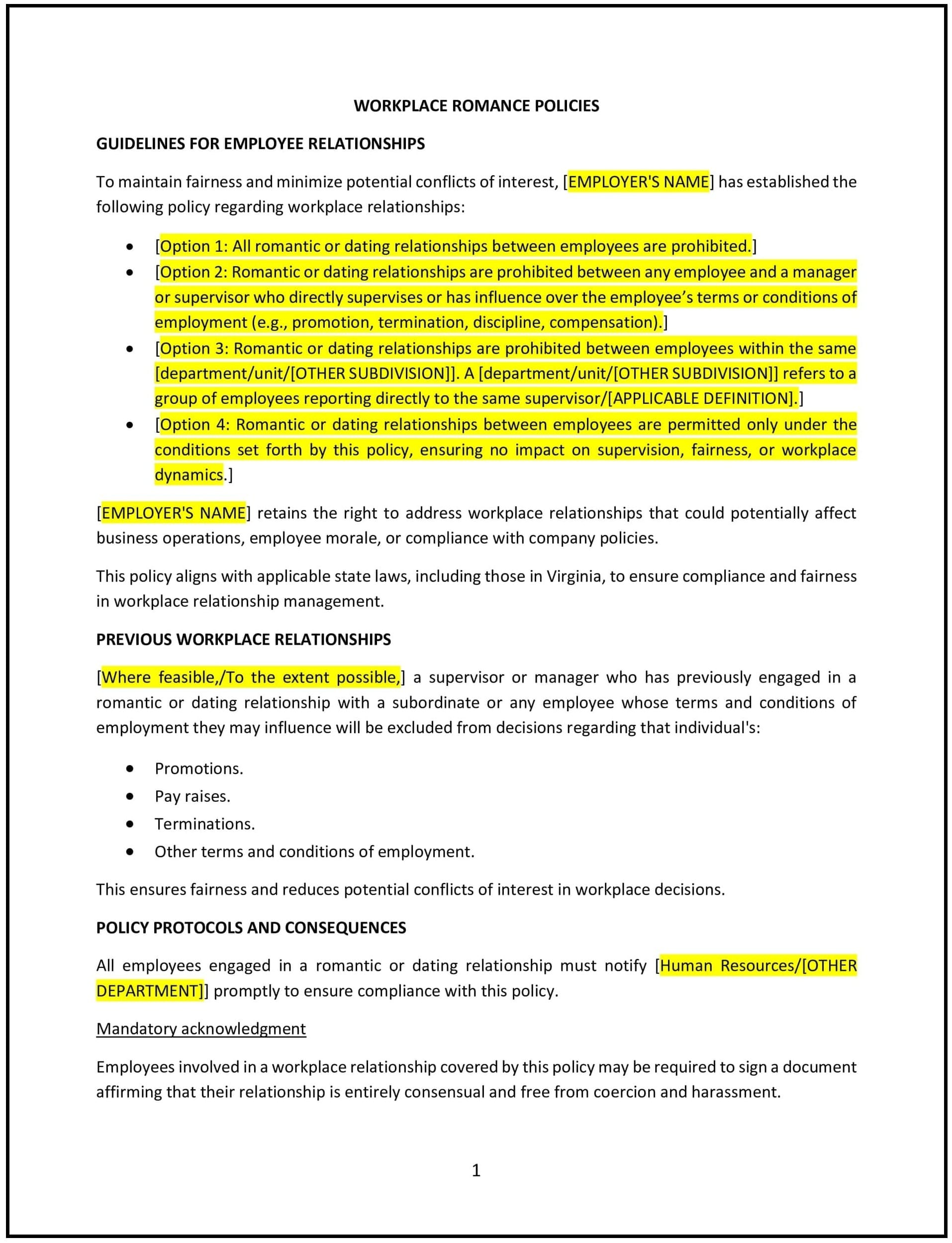Workplace safety policy (Vermont): Free template

Workplace safety policy (Vermont)
This workplace safety policy is designed to help Vermont businesses create a secure and healthy environment for employees, customers, and visitors. It outlines safety standards, procedures, and responsibilities to minimize risks, prevent accidents, and promote compliance with Vermont labor and safety regulations.
By adopting this policy, businesses can promote a culture of safety, enhance employee well-being, and reduce liability risks.
How to use this workplace safety policy (Vermont)
- Define safety responsibilities: Specify the roles and responsibilities of employees, managers, and safety officers in maintaining a safe workplace.
- Include hazard identification procedures: Outline processes for identifying and reporting workplace hazards, such as equipment malfunctions or unsafe practices.
- Provide emergency procedures: Detail the steps to follow during emergencies, including evacuation plans, fire drills, and first aid protocols.
- Address training requirements: Include mandatory safety training for employees and managers to ensure awareness of workplace safety practices.
- Establish reporting protocols: Specify how employees should report accidents, injuries, or unsafe conditions.
- Monitor compliance: Conduct regular safety audits and inspections to ensure adherence to Vermont safety regulations and company standards.
- Maintain documentation: Keep records of safety incidents, training sessions, and inspections for compliance and continuous improvement.
Benefits of using this workplace safety policy (Vermont)
This policy provides several benefits for Vermont businesses:
- Promotes safety: Reduces workplace hazards and minimizes the risk of accidents or injuries.
- Enhances compliance: Aligns with Vermont labor laws and OSHA regulations for workplace safety.
- Reduces liability: Protects the business from legal and financial risks associated with workplace incidents.
- Improves morale: Demonstrates the company’s commitment to employee health and safety.
- Encourages accountability: Establishes clear expectations for maintaining a safe work environment.
Tips for using this workplace safety policy (Vermont)
- Communicate the policy: Share the policy with employees during onboarding and include it in the employee handbook or internal systems.
- Provide regular training: Conduct periodic safety training to ensure employees are aware of safety procedures and potential hazards.
- Encourage reporting: Foster a culture where employees feel comfortable reporting unsafe conditions or near-miss incidents without fear of retaliation.
- Use technology: Implement safety management software to track incidents, inspections, and training.
- Update regularly: Revise the policy to reflect changes in Vermont laws, workplace conditions, or industry standards.
Q: What are the primary responsibilities of employees under this policy?
A: Employees are responsible for following safety procedures, reporting hazards or incidents, and participating in safety training programs.
Q: How should businesses handle reports of unsafe conditions?
A: Businesses should investigate reports promptly, address the issue, and implement corrective measures to prevent recurrence.
Q: What safety training should businesses provide?
A: Training should cover emergency procedures, equipment use, hazard identification, and any industry-specific safety requirements.
Q: Are businesses required to conduct safety audits?
A: Yes, businesses should conduct regular safety audits to identify risks, improve compliance, and continuously improve workplace safety.
Q: How often should this policy be reviewed?
A: This policy should be reviewed annually or whenever significant changes occur in Vermont safety regulations or workplace practices.
Q: What resources can businesses provide to support workplace safety?
A: Resources may include personal protective equipment (PPE), first aid kits, safety signage, and access to safety officers or consultants.
Q: Does this policy apply to remote employees?
A: Yes, this policy applies to remote employees, particularly regarding ergonomic setups and safe work environments.
Q: How can businesses promote adherence to this policy?
A: Businesses can promote adherence by providing training, rewarding safe practices, and ensuring consistent enforcement of safety procedures.
This article contains general legal information and does not contain legal advice. Cobrief is not a law firm or a substitute for an attorney or law firm. The law is complex and changes often. For legal advice, please ask a lawyer.


